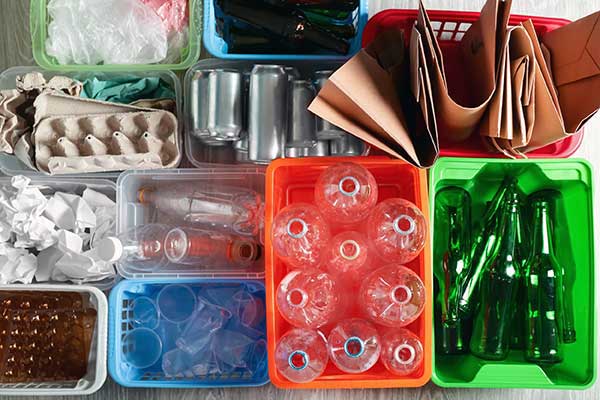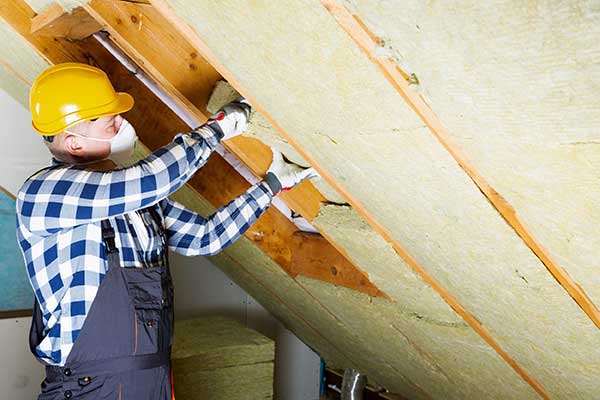The best energy saving tips range from simple lifestyle adjustments and small repairs to larger investments. But there’s one thing they all have in common: They save energy and reduce energy bills.
We’ve packed this energy saving guide with energy efficiency ideas that will help you save money and reduce energy use in homes and businesses alike.
Why Energy Efficiency Is Important?
Before we get into why energy efficiency is essential, let’s first take a look at just how much energy we’re consuming. The United States’ 2018 expenditure on energy was $3,891 per person, including money spent on energy used in businesses, offices, homes, transport, and industry.
Here’s a quick breakdown of what that looks like:
- Petroleum products (such as diesel, motor gasoline, jet fuel): 58%
- Electricity, including natural gas, coal, nuclear, renewables: 32%
- Natural gas: 12%
- Coal: 2%
Transport is the most significant user of energy (47%), followed by residential use (21%), industrial use (17%), and finally commercial (15%).
Many of these energy sources come from fossil fuels, emitting greenhouse gases into the Earth’s atmosphere and contributing to climate change. There’s a powerful environmental argument that we need to reduce our use of fossil fuels.
Energy Efficiency Is Good for Your Bank Balance
Along with the environmental costs, energy consumption comes at a cost to your wallet. The average U.S. price per kilowatt-hour (kWh) in November 2020 was 13.35 cents per kWh (residential) and 10.59 cents per kWh (commercial). The average monthly electricity bills for homeowners were between $75.63 (Utah) and (Connecticut) $150.71, according to the Energy Information Administration’s (EIA) 2019 report.
Gas is expensive to install in the United States but cheaper for running a home. For instance, let’s compare the American Gas Association’s* 2019 average monthly gas bill with the average 2019 electricity bill:
*(The AGA link mention previously shows the average residential gas bill by state. We divided this annual cost to obtain a monthly rate)
- Texas: $42.08 (gas) vs. $134.07 (electricity)
- Colorado: $50.92 vs. $83.07
- New York: $92.75 vs. $103.06
In the home, heating and cooling homes represent the most considerable energy cost, accounting for 47% of energy use. Heating hot water is next at 14%, followed by washers and dryers at 13%, and lighting at 12%
Why Energy Efficiency Benefits You and Your Business?
Using less energy can help reduce pollution and save money. For businesses and industry, being green can have a positive influence on potential customers who like to deal with companies that represent their values. This sense of environmental responsibility reaffirms positive branding, which can result in customer loyalty, increased sales, and a more attractive bottom line.
First Energy-Saving Tip: Planning
Devise a plan with achievable goals for the short, medium, and long term. If you’re not sure what those could be yet, this guide to energy saving tips will help you identify areas for improvement.
Short-term ideas include straightforward and easy-to-implement actions, such as auditing the energy efficiency of your appliances, recording how you use them, insulating against drafts, and using energy during times when energy fees are lower.
Medium-term planning could involve replacing appliances, structural changes to your premises, and changing energy suppliers. You should also check for potential tax rebates and government grants — Energy Star offers information about tax credits and other energy efficiency incentives.
Long-term goals vary, from installing renewable energy sources like ground source heating to putting solar panels on your building’s roof.
If you have the budget, an energy auditor can provide qualified advice, insights, and energy-saving ideas that could save you much more than their consultation fees in the long run. Get your entire household and colleagues involved and invested, too. Be proud of your work and hold yourself accountable. Share your energy saving tips and achievements on social media, and encourage others to get on board. If you happen to own a business, you can talk about energy efficiency and conservation in your company’s mission statement.
Simple Energy Saving Tips
Many people and businesses leave power strips on all the time, which is estimated to cost the United States $11 billion in annual energy costs through “ghosting” — powering the little lights on appliances when they are placed on standby instead of completely turned off or unplugged.
Here are some simple ways to save energy right now:
- Unplug all chargers for your cell phone, tablet, laptop, and other electronic devices when not in use, particularly those with display lights.
- Turn off tablets, laptops, and consoles as soon as you stop using them.
- Unplug any electrical item as soon as it reaches 100% charge, and do not leave anything charging overnight.
- Ensure the last person who goes to bed (or leaves the house) unplugs the Wi-Fi router.
- Turn off any power strips that are not in use.
Energy-Saving Tips for Heating and Cooling Costs
Heating and cooling buildings account for 47% of a home’s energy use. Some 6% of all the energy used in the United States is for air conditioning.
An easy place to start saving energy is clothing. It’s as simple as wearing clothes suitable for the season. Pile on jumpers and thermals in the cold winter months and wear loose, cotton clothing in the summer.
Regularly cleaning and replacing your HVAC’s air filters is another quick way to save energy. Installing high-efficiency air conditioning can further reduce energy use. If using natural gas to heat your building, check the energy efficiency of your furnace, boiler, or space heater.
The Importance of the Regulating Temperature
A programmable thermostat offers control over your air conditioning and heating. Keep in mind that the closer the indoor and outdoor temperatures of your building are, the lower the utility bill will be. Keep the temperature lower in corridors, storerooms, and areas of higher physical activity.
Consider using ceiling fans as they use a lot less electricity than air conditioners. To save energy, set the fan to spin counter-clockwise (while looking up at it) in summer so that it pushes cool air down. Turn it off whenever you are not in the room. This energy saving tip will allow you to set your thermostat higher in the summer — around 78 degrees Fahrenheit — when you’re home, and you feel the house needs cooling.
In winter, set your ceiling fan to spin clockwise so it can gently redistribute warm air that has risen to the ceiling. Don’t spin it too fast or it will cool you. In the winter, set the thermostat to 68 degrees Fahrenheit during waking hours. You can reduce that temperature further for when you’re asleep or if you are away from home.
Heat pumps make for very efficient heating systems bycollecting thermal energy and heat from the air, water, or ground outside, and then transferring it for indoor use.
Here are more energy saving tips to try:
- Seal heating and cooling ducts, unused doors, and flues.
- Keep radiators free from obstructions.
- Turn thermostats down before opening windows.
- Try smaller, portable spot heaters to warm specific zones.
- Recycle waste heat; duct waste heat from ovens and refrigeration systems to warm other areas or converted to hot water.
- Insulate all pipework and install efficient water heaters.
- Use dampers to regulate air conditioning airflow on a room-by-room basis or to cut off unused rooms.
A smart thermostat offers the ability to control your home’s heating remotely. This is usually via an app on your smartphone, tablet, or other internet-connected devices. Adjusting your heating and cooling demands by just one degree helps, saving up to 320 kg of carbon emissions a year. Some smart thermostats learn your heating and cooling preferences and automatically adjust temperatures to your liking. They can even monitor HVAC usage.
Enter your ZIP Code and compare electricity rates
Energy Saving Tips for Lighting
A quick way to save energy and reduce your utility bill is to replace all your traditional incandescent bulbs. Compact fluorescent lights (CFLs) and light-emitting diodes (LEDs) bulbs last up to 25 times longer and use between 25-80% less energy. In the United States, look for Energy Star approved LED bulbs among their energy-efficient products.
To reduce energy usage further, it’s good practice to:
- Turn off all lights when they’re not in use, as soon as you leave a room.
- Use motion sensors to activate light bulbs instead of switches.
- Focus your lighting and split lights over several switches; that way, you only light the required areas.
- Use dimmer switches that allow you to adjust light levels.
- Keep all windows clean and unobstructed to take advantage of as much natural light as possible. Painting walls with light, reflective paint helps, too.
- Regularly clean lamps to keep them clean and free of dust.
- Replace old lighting fixtures with modern light fittings that allow more illumination; it’s even better if you pair these with more efficient light bulbs.
Running an Energy-Efficient Kitchen
Kitchens and laundry rooms are perfect places for a budding energy saver to start saving money and drive down electric bills.
Easy measures you can take right now for running an energy efficient kitchen include:
- Boil tea kettles with only the water required; you’ll save on the extra energy that would have been used to boil more water.
- Run dishwashers on full loads, ideally on an eco-wash.
- Add a water-saving nozzle to faucets, and turn faucets off between rinsing plates.
- Fridges work best when three-quarters full, so air circulates properly. Smart fridges cool when electricity is cheapest. Open the fridge door for a minimal time.
- Recycle glass, plastics, metals, organic waste, paper and cardboard — check earth911.com for recycling centers near you and what they accept.
When cooking, put pots on lids, so food cooks faster using less energy. Conventional ovens use a lot of power (2,000-5,000 watts), so heat food in energy-efficient microwaves oven (1450 -1700 watts) ( rather than in power-hungry conventional ovens or on the stove. Slow cookers (125-250 watts) are a great, low-energy alternative to ranges, too.
If you do turn on the oven, batch cooking is a great way to make the most of the energy you’re using. Freeze the extra food, and reheat it later on.
In the laundry room, clothes washers should be run when full and, if possible, on a cold water wash. If possible, air-dry clothes instead of using a clothes dryer, either outside or on a clothes horse or laundry rack. If you do use a clothes dryer, take clothes out as soon as they are dry. Clean the lint screen on clothes dryers and the lint tray on washing machines between every load.
If any of your kitchen or laundry appliances are more than 10 years old, it’s worth considering replacing them with more energy-efficient models. Be sure to buy an appliance suitable to your needs, and check Energy Star for any available grants.
Energy Efficiency in the Bathroom
Each drop of water that leaves a house or building needs to be treated afterward, and that uses energy. Our energy-saving tips for the bathroom are:
- Spend at least one minute less in the shower.
- Try a cooler shower; heating water is a big user of energy.
- Use a water-efficient shower head.
- Install water-saving nozzles to faucets and shower heads.
- Flush only when essential.
- Turn off the faucet while brushing your teeth.
Insulation Tips for an Energy-Efficient Building
Air leaks and drafts are a significant source of heat loss, especially in colder climates. Air takes the path of least resistance, so it’s an expert at finding any gaps or holes in walls and windows.
A cheap and straightforward way to block air leaks is to caulk walls and windows before winter. Caulking involves sealing cracks in doors, windows, and walls with a caulking compound, which is a quick and efficient way to block drafts. This video explains how to caulk.
It may be that weather strippings are a more suitable treatment. Instead of caulk, thin plastic layers are stuck to window panes and door frames to block air leaks. Here’s a video on how to install weather stripping.
Storm windows are a more affordable way to reduce air leaks than replacing single-pane windows with double-pane, high-quality windows. Storm windows can be placed inside or outside your current windows. Modern “low-e storm windows” are more effective than older models.
In the winter, storm windows reflect a building’s warm heat into it. In summer, they reflect the heat outside, which creates a more comfortable temperature in both scenarios.
Buildings in colder temperature zones will benefit more from insulating low-e storm windows. In comparison, warmer temperature zones require solar low-e storm windows. The benefits — reduced noise, fewer drafts, and saved energy — are similar to a full window replacement, paying for themselves within 5-7 years and reducing air leakage by up to 10%.
Insulation is also vital, and not just for air leaks. Cold air in basements, crawl spaces, walls, attics, and between floors all need insulation. Call in an expert if you’re not sure how to insulate safely.
How to Get Cheaper Electricity?
While this isn’t exactly an energy saving tip, it’s a good trick to know to help reduce utility bills. Time-of-Use (TOU) rates occur when energy suppliers offer cheaper rates to use electricity when demand is low or during surges in supply.
Generally speaking, the United States electricity consumption periods are:
On-peak: 7 am until 11 pm on weekdays
Off-peak: 11 pm until 7 am on weekdays and all day on Saturdays, Sundays, and holidays
If your contract includes this aspect, you may benefit from your energy supplier’s Time-of-Use rate if you use appliances overnight, such as putting a dishwasher on a timer or charging an electric car. Businesses can also switch energy-draining processes to nights.
Installing Renewable Energy Sources
Bigger, longer-term projects are more expensive and offer greater returns on investment (ROI). Before starting, we recommend talking to experts about your options and contacting Energy Star for help with grants and rebates.
There are lots of options for commercial properties, homeowners, and industry. The idea is to generate clean, renewable energy locally. Doing so reduces the demand on the local energy grid, whose energy source could be power plants that use environmentally-damaging fossil fuels.
Renewable installations include:
- Solar panels or local wind turbines for electricity generation.
- Installing heat pumps (air-to-air, water, or geothermal) for heating and cooling.
- Tapping into hydroelectric or geothermal energy possibilities.
- Biomass generators.
These are long-term projects that offer significant energy savings as part of a more considerable investment.
Energy Saving Tips for the Energy Efficient
There’s a wide range of simple and easy-to-adopt energy efficiency habits that can reduce your energy footprint at home, at work, and at play. Our energy saving tips will help you conserve energy, lower energy bills, and reduce emissions in the environment. The further you immerse yourself in the energy saving field, the easier it is to make these good habits stick and conserve energy for the benefit of all.
Brought to you by energysavings.com
All images licensed from Adobe Stock.
Featured image:




